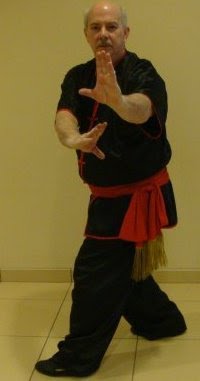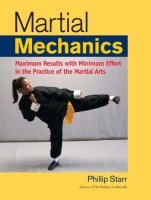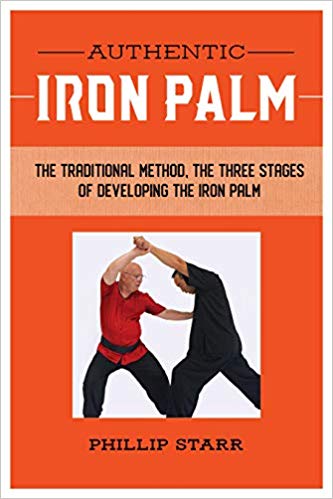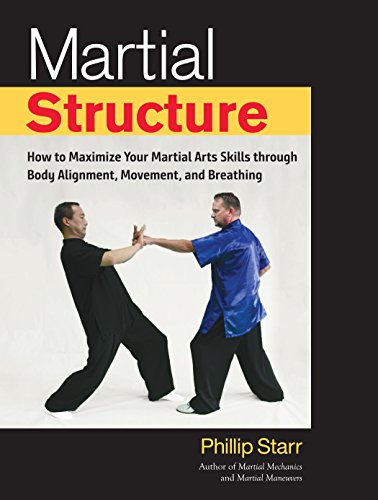THE WAY OF THE
WARRIOR
The term "martial art" is a
Western idiom used to describe a wide variety of Asian combative methods (and
their sport derivatives). It may come as a surprise to some of you that a
number of these methods are not truly martial while others are not really
arts. A number of these forms of pugilism were, in fact, developed as
combative systems used by warriors but others evolved into methods of physical
and spiritual development, and sport.
For example, systems developed by
warriors include the various methods employed by the samurai
of feudal Japan (bujutsu or bugei), certain forms of
Chinese kung-fu, which were actually employed on the fields of
battle, aikijutsu, karate (both of which were used in battle), and a few
others. One of the greatest historians of Japanese martial systems, Donn
Draeger (dec.) argued that unless a system was designed by professional
warriors of the day and employed on the field of (military) battle, it could
not be considered a martial art. This means that unarmed systems (such as
karate) would be considered "civil arts" since they were based
largely on unarmed techniques which made them largely impractical for use on
the battlefield.
I believe his definition is too
restrictive. No one would willingly attack an armed soldier with his bare
hands and several of these "civil arts" were and are still practiced
by military forces. Even our modern soldiers (especially those in special
operations) are trained in various forms of karate, or other unarmed forms of
pugilism.
Many of the "civil arts" which
were developed by priests and practiced in various temples were developed and
practiced primarily for military or paramilitary reasons. Such temples
(like the Shaolin Temple and numerous temples in Japan) were often hotbeds of
political activity and oases for political refugees. A number of them
could even field their own paramilitary forces.
However, Draeger also made a clear
distinction between martial art and combative sport.
Sporting forms of combative systems such as karate-do, judo, and even
taekwondo, are not truly martial arts. The restraints placed
upon them and the modifications of their applications make such forms
much less than what they were originally intended to be. While their use
as sports can be beneficial in terms of promoting fitness, sportsmanship, and
self-confidence, such activities are substantially different from their original
combative forms.
In a past lecture, I wrote about the
differences between what the Japanese call the jutsu
systems and the do systems. The bujutsu
(martial arts, pronounced wushu in Chinese) were developed by and
for warriors for use in actual combat. Their primary function was to
ensure victory on the battlefield and promote the survival of the
warrior. After Tokugawa united the nation for the first time, many bujutsu
teachers and practitioners found themselves out of work since open warfare had
become a thing of the past and personal duels were forbidden by law. This
led to the development of the various forms of budo
(martial ways, pronounced wudao in Chinese) which emphasized
physical, mental, and spiritual discipline which aims at perfection of the
individual.
While Japan's combative systems still
(but not always) make a distinction between the jutsu (shu) and do (dao) forms,
other Asian nations such as China, do not. This has led to much confusion
in today's martial arts world.
Many of today's practitioners of martial
arts seek to become what I call "classical warriors" but have no idea
what that means or entails. In Yilichuan, we actually tell students that
are training to become classical warriors, but what does it involve and what
does it really mean?
Webster's defines "warrior" as
"a person engaged or experienced in “warfare." This is not
nearly the same thing that we mean. Most soldiers are not truly warriors
and not all warriors serve in the military or as peace officers.
One author cites a fine example; Gichin
Funakoshi, the "father" of Japanese karate. Born into a warrior
family, Gichin witnessed the dissolution of Okinawa's warrior class
by the occupying Japanese forces. However, coming from shizoku
stock, he studied karate (although this was strictly forbidden by the
occupational Japanese government) and continued to do so for most of his adult
life. Coming from a poor family, he trained daily. Karate was as
much a part of his daily existence as eating or sleeping.
He was lucky to find a job as a
schoolteacher although it meant he had to cut off his queue which was symbolic
of his warrior heritage and he continued to train at night, walking miles to
his teacher's home by the dim light of a lantern and avoiding the local
Japanese authorities.
Even into his 80's he continued his daily
training regimen. He would rise early, wash, and then practice some
basics (kihon) and forms (kata) before taking morning tea or breakfast.
Very different from today's martial arts teachers!
Like an author who has written extensively
on the subject, I too have been amazed at the remarks I've heard from many
so-called "martial artists" over the years...
"I do karate on Monday and Wednesday
nights..."
"Kata? What good is that? You can't
use kata in a fight..."
"I don't want to learn any of that fancy
stuff. I want to learn how to fight..."
Obviously, these people see their
involvement in martial arts in a very different light from that of Gichin's.
Many of these people do martial arts just as they also might
do bowling on Tuesdays. They come to class once or
twice a week and forget about it on the "off" days. They
usually believe they're learning the real thing and their spouses or friends might
brag on their "deadly" kung-fu or karate training...
There are those whose main concern is
attaining rank. Once they reach the level of first-grade black belt (if
they ever do), they think they're experts and they drift away (kind of like a
bad fart).
Others obsess about winning tournaments
and becoming champions. I confess that I used to compete a lot, but it
was never the central focus of my training. For some people, it is.
These people often seek to "improve their arts" by modifying techniques
to better score points or impress judges. In time, their techniques and
forms can hardly be compared to the originals, and unfortunately, this
very process has been a driving force behind the evolution of martial arts in
the 20th (and now 21st) century.
Over the years, I have seen the emergence
of bizarre mutations of real martial arts such as musical kata, really wild and
outlandish costumes (I won't call them uniforms), and antics that rival
carnival sideshows and snake oil sellers.
Then of course, there are those who want
to learn the "true, deadly secrets" of the martial arts. They
have no time, nor inclination to bother with formalities such as courtesy,
forms, and other aspects of training hall and martial discipline. These
are usually "drifters" who go from school to school, hoping to find
the "secrets" and staying just long enough to learn what they think
is useful before moving on.
This is in marked contrast to men such as
Gichin. But then, most of us weren't born into warrior families and
Westerners often take up martial arts just to learn some basic self-defense or
to get fit. And that's OK for the most part.
But...
The difference between the warrior and non-warrior
is in the way they see themselves and the way in which they prioritize the art
in their lives. This lecture will be the first in a series about living
as a warrior in the classical sense...
Most people don't consider themselves
warriors. They may play at it in the training hall (or in video games)
but once they get dressed and walk outside, they're back to being dentists,
salesmen, plumbers, or whatever. They're no more warriors than the people
who fantasize about being one of the figures on the video Star Wars game.
However, Gichin bore no such illusions about his personal warriorship.
Although he never served in the
military or fought in a war (Okinawa
had not suffered war for over 200 years when he was born), he was taught from
early childhood how a warrior should feel, think, and act...and live. The
shizoku were still warriors; tempered, hardened, elite.
To a real warrior, his training is not a
game or fantasy. It's not simply something they do once or twice a week.
To the man of arms, his weapons (whether natural or manufactured) are the tools
of his trade and they set him apart from the rest of society. Their
condition and his skill in using them determines his odds for survival in
battle. To such people, martial arts are a way of living; a constant
struggle to improve and perfect one's skill.
When peace broke out in feudal Japan and
Okinawa, the noblest warriors took their training a step further. While
others lost their martial instincts and allowed their weapons to deteriorate,
people of Gichin's breed realized that constant training helped them excel in
endeavors totally unrelated to combat (enter Yiliquan). They began using
their training as vehicles for personal development. When this is
combined with high ethical standards (which tend to naturally develop among
such people), we see the birth of the martial WAY (do or dao).
Martial cultures have developed all over the
world throughout history - from Asia to Africa to Europe. And although
there are certainly many cultural differences between these groups, there is a
core attitude between all warrior groups that actually seem to bind them
together (moreso than their non-warrior counterparts).
There are common threads between the samurai of
feudal Japan, the European knights (of chivalric orders), certain African
tribes, and even American Indians.
Understanding and developing the true
warrior spirit is what martial arts training is all about. Without it,
students may learn some interesting "tricks" and get a little more
fit, but that's about it.
Now, you might wonder why someone such as
a gas pumper, baker, or carpenter would want to think of themselves as
warriors. After all, this is the 21st century and the idea seems a bit
outdated and sounds pretty corny, doesn't it? You could have asked
Funakoshi that same question. After all, the warrior caste in Okinawa had
been abolished before he was even born! He was, after all, a
schoolteacher! Eizu Shimabuku was a chicken farmer. Mas Oyama was a
milkman (really!). Cheng Tinghua repaired eyeglasses, Yin Fu sold bakery
products, and Yang Luchan was a houseboy. Warriors, every one.
Warriors are special people.
Because they are trained to understand the concept of personal honor, they set
their ethical standards above most of the rest of society. Because they
train daily in the pursuit of excellence (nothing but perfection impresses
them), they tend to excel in their particular vocations. It is an
extraordinarily powerful and fine way to live. But it's not for
everyone. If you feel it's not for you, then wad up ths lecture and chuck
it. But if you want to follow the path of the classical warrior, read on.
Real followers of the wudao
are after more than just physical expertise. They are also people of
exceptional character who seek wisdom and insight; things which are much more
elusive than mere physical training but which are almost impossible to acquire
without it.
The wudao are disciplines devoted to the
perfection of character. The warrior is constantly striving to improve
and polish those areas that need work. This struggle is not confined to
the four walls of the training hall. The warrior trains constantly and at some
level of consciousness, training is always on his or her mind.
When he rises in the morning and works
out the stiffness, he reviews what the day will hold for him and begins to plan
his tactics for achieving his goal(s) for the day. He evaluates his weaknesses
and how he plans to overcome them. He reviews the day's obligations to
work, family, and friends...and then schedules his training around them.
He is constantly thinking about training and improving himself as a
warrior. After all, his training is what will help ensure his
"survival" (success) on the "battlefield" (daily life).
Mas Oyama said, "If someone asked me
to what a student should devote most of his time to doing, I would answer,
'Training.' Train more than you sleep." To non-warriors,
Oyama's words sound like those of a borderline fanatic. Let them think
so. Warriors are special and distinctly different from the rest of
society. Whereas the typical non-warrior spends his/her time in the
pursuit of pleasure and entertainment, the warrior entertains him or her self
with cultivating the warrior spirit and perfecting his/her skills.
The warrior trains to some degree every
day. On some days, he will push himself to the limits of endurance.
On others, he will train more lightly and study other material. But it's
all part of the training process. Part of each day
will be spent "polishing" or "sharpening" his weapons and
spirit. Although we're much less likely to become involved in a
life-and-death struggle nowadays than were our warrior ancestors, we still face
adversaries of one kind or another. It might seem that practicing a
reverse punch or your Xingyiquan form or Water Shape form or sword practice
won't do much to help you deal with the conflicts you face in 21st century
life, but they do. Only a warrior can understand this.
Friends and even family may regard
warriors as obsessive or compulsive or just plain nuts. Not so.
Such behavior is exhibited by people who are not in control of themselves and a
warrior is always in control. Although he may frequently engage
in training that results in pain and fatigue, it isn't because he likes
them. They're just part and parcel of the training; they're obstacles to
be overcome and he will strive to overcome them with every ounce of his
spirit. Non-warriors, upon experiencing such things, turn and walk
away...seeking pleasure and gratification of the senses rather than discipline.
So, do you train daily or just when you go to class?
Remember that training doesn't just happen in the training hall. Warriors
hone their skills constantly and if you ARE one, you're looking for ways to fit
training into a part of each day. This isn't to say that you have to
endure a gut-busting session every day! Training must be balanced with
rest and a fair portion of the warrior's life involves study;
intellectual and spiritual growth. And yes, play. But there's a
difference between the way in which warriors and non-warriors play (although
they often do it together). Non-warriors fill their spare time with
it. Warriors have only a little spare time and do it as a way to allow
themselves to rest from their training.














